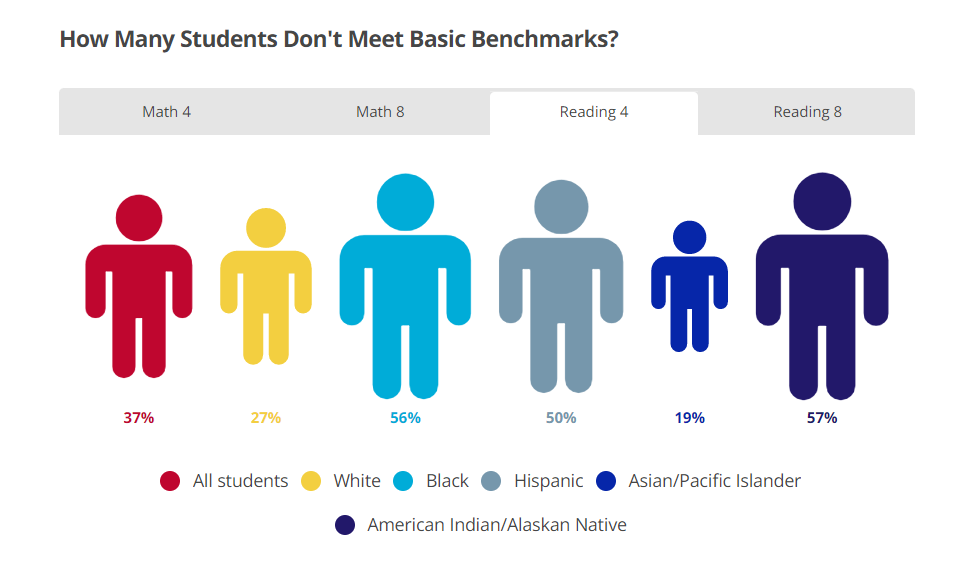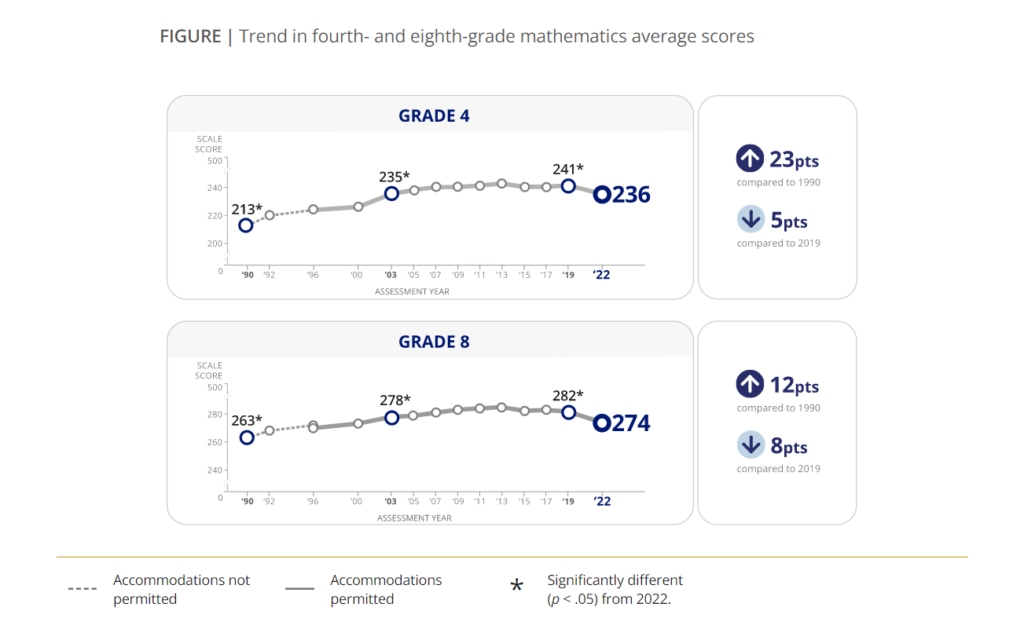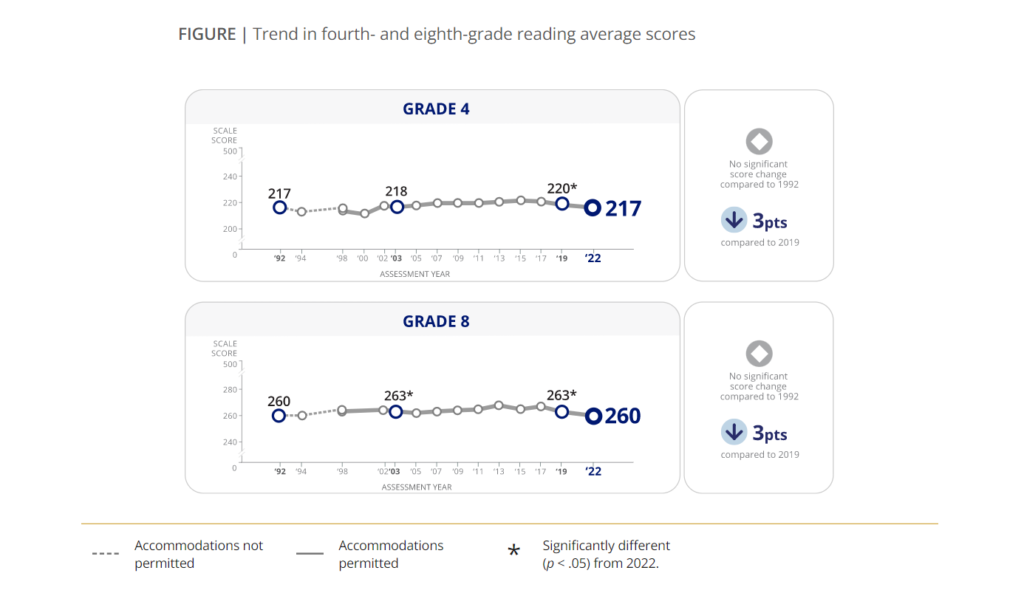Recently, the Nation’s Report Card released data detailing a significant decline in both reading and math test scores. But what is The Nation’s Report Card? And why does it matter when thinking about how to best support students?
The Test
The Nation’s Report Card, also called the National Assessment of Educational Progress (NAEP) is a nationwide, congressionally mandated assessment from the National Center for Education Statistics. Fourth and eighth graders take it typically every two years and in various subjects, most commonly reading and math. See what kinds of questions students answer by taking a five-question pop quiz.
Hear it from the New York Times!
The New York Times podcast “The Daily” released an episode about NAEP scores. They cited tutoring as an effective solution to get students closer to their educational goals!
The Results
When the 2022 data became available at the end of October, scores were lower across the board. In math, scores dropped for the first time since the test began in 1990, and the average reading score was lower than all previous assessment years going back to 2005! Click the photos to read NAEP’s overviews of math and reading.
We know that the stress, interruptions and unfinished learning that came with COVID-19 are reflected in these scores. It’s important to know that not all groups of students were affected equally.
For instance, the highest 10% of fourth grade math scores declined by two points since 2019, while the lowest 10% declined by seven points. In the same fashion, the highest 10% of fourth grade reading scores didn’t change at all since 2019, while those in the bottom 10% declined by six points. In short, students who already faced challenges were impacted at higher rates than those who were meeting their benchmarks.
Why It’s Important
Unsurprisingly, many of the trends in these test scores reflect larger socioeconomic inequities that have been happening since long before the pandemic. “The pandemic laid bare an ‘opportunity gap’ that has long existed,” says Peggy G. Carr, Commissioner of the National Center for Education Statistics in the Institute of Education Sciences, U.S. Department of Education.
With significant gaps between white and BIPOC student scores, it’s clear we need to work harder to ensure all students have the educational opportunities and support they need to succeed. Currently, students who identify as Black, Hispanic, and American Indian/Alaska Native are much less likely to meet basic benchmarks. We must do better for our students!
You can see this data illustrated below in the graphic from EdWeek.com.

A Solution Based in Evidence
Want to dive deeper into our evidence?
COVID-19 has created serious academic deficits, and recovery will require intentional intervention. Tutoring is an important part of the solution. Both cost-effective and scalable, Reading Corps, Math Corps and Early Learning Corps have a strong evidence base and are proven to work. Students who receive tutoring from one of our programs make incredible progress and growth.
If we had a magic wand, we’d wave it and ensure every student could access high dosage tutoring from an evidence-based program! In the meantime, we’re innovating programs that will allow our tutors to support more students and recruiting passionate people to serve as tutors.
With heightened needs across the country, we need more people power. We’ll begin recruiting tutors for the 2023-24 school year in February. If you or someone you know would like to be part of supporting students to help them build the skills they need to succeed, we’d love to hear from you. Drop us a line at join@ampact.us or click the button below to sign up to receive updates as new opportunities become available.


